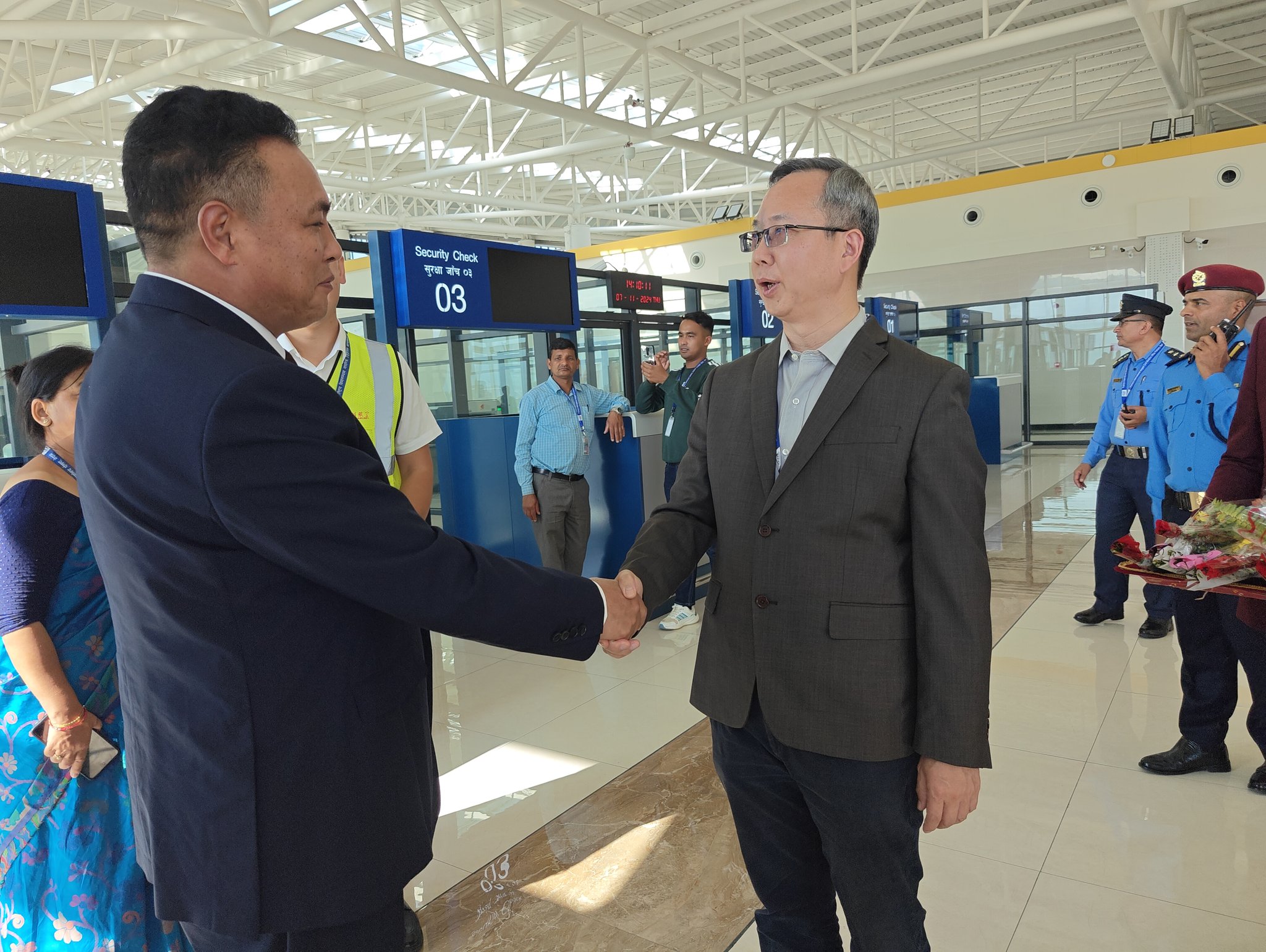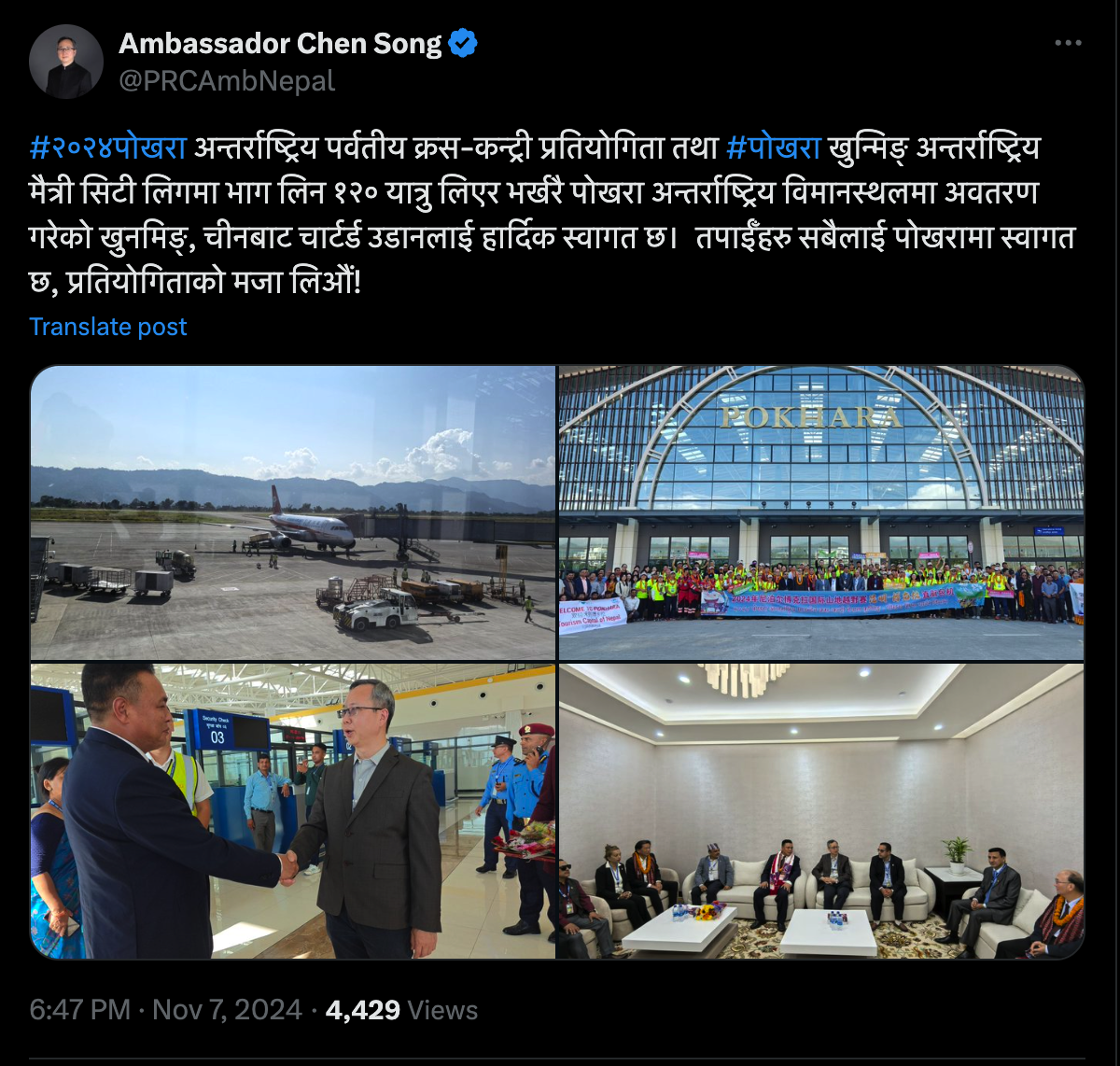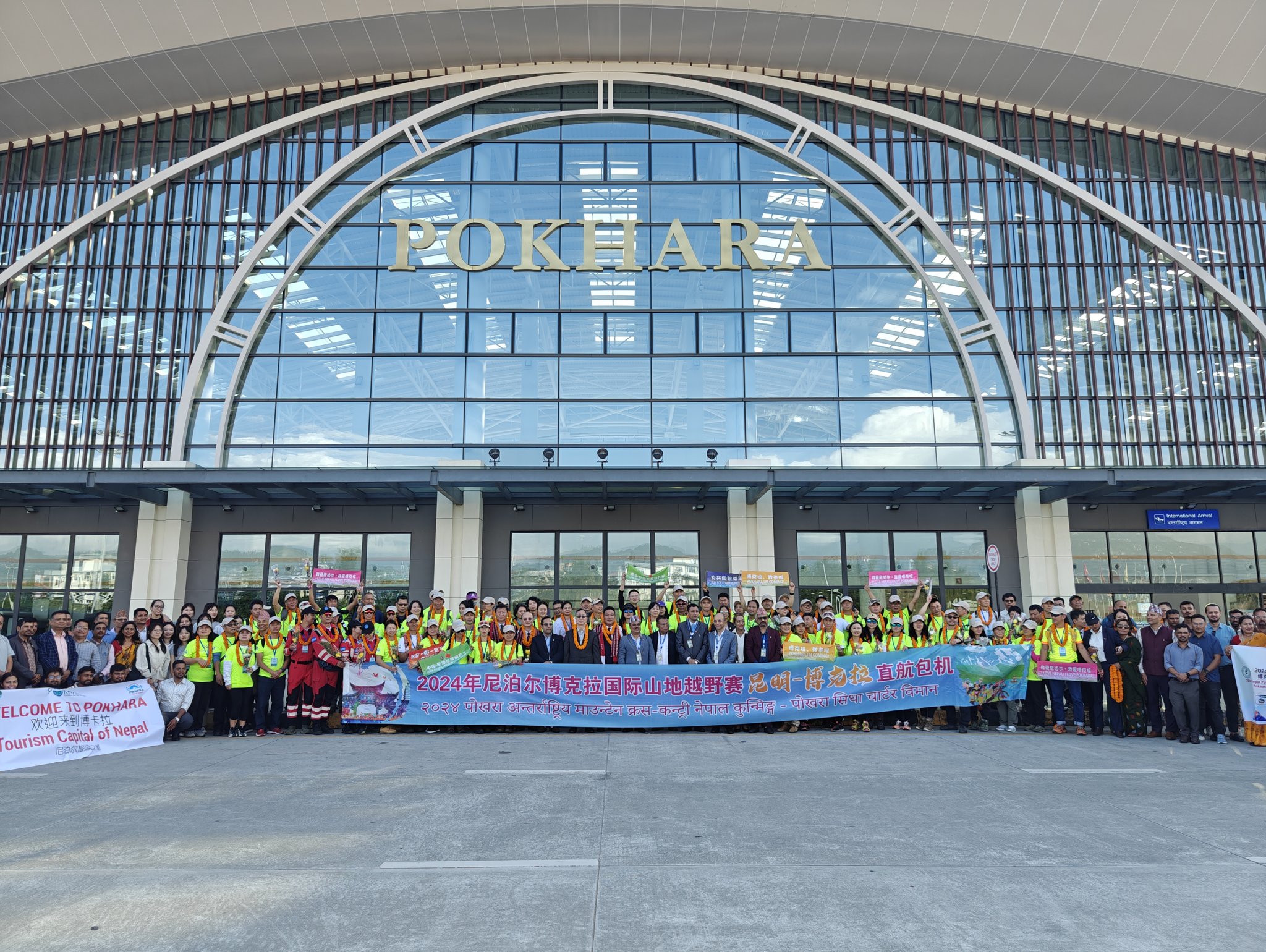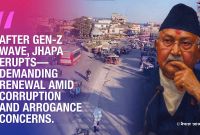Pokhara Airport’s 'Great Leap': Billions in Chinese Debt for Just Two Flights

In a move celebrated by Chinese and some Nepali officials, Pokhara International Airport, one of Nepal’s most ambitious infrastructure projects, welcomed its second international flight—a chartered plane from Kunming, China. This flight, carrying 120 passengers to attend the “2024 Pokhara International Mountain Cross-Country Competition” and the “Pokhara-Kunming International Friendship City League,” was received with fanfare. Chinese Ambassador to Nepal, Chen Song, shared his excitement about this milestone on X.com, stating, "Recently, a chartered flight from Kunming, China, with 120 passengers landed at Pokhara International Airport to participate in the 2024 Pokhara International Mountain Cross-Country Competition and the Pokhara-Kunming International Friendship City League. A heartfelt welcome to all of you in Pokhara; let’s enjoy the competition!"

However, Ambassador Chen’s October 2023 claim that Pokhara International Airport is part of the Belt and Road Initiative (BRI) stirred a hornet’s nest of controversies, sparking debate over the airport’s strategic and financial implications for Nepal. His statement has reignited discussions on the economic viability of the project, the heavy Chinese loan used for construction, and potential risks to Nepal’s sovereignty and finances.
A Strategic Project Tied to China’s Belt and Road Initiative
When Ambassador Chen Song publicly linked Pokhara International Airport to the BRI in October 2023, his comments amplified concerns across Nepal. While the Nepali government has not formally designated the airport as a BRI project, the ambassador’s remarks drew attention to the project’s Chinese financing and construction, raising questions about the broader intentions behind it.
This $200 million project was primarily funded by a loan from the Chinese Exim Bank, adding to Nepal’s foreign debt. Given the limited revenue prospects for Pokhara International Airport, some Nepalis worry that it may become another case of “debt trap diplomacy,” a scenario in which Chinese loans could impose financial burdens that leave Nepal economically beholden to Beijing. The potential ramifications of this debt have generated much public debate, with the project now seen by some as a geopolitical play rather than a simple infrastructure development.
Nepal’s Financial Obligations and Questionable Return on Investment

The airport’s initial construction cost was estimated at NPR 22 billion. However, due to delays, cost overruns, and project adjustments, the final tally reached NPR 25.34 billion (around $200 million USD). The loan, structured with mixed interest rates from the Chinese Exim Bank, was designed to assist in financing, but this financial arrangement now raises concerns about the airport’s ability to generate enough revenue to service the debt.
Nepal’s financial burden is significant: the repayment terms require regular installments that are substantial given the country’s economic profile and the limited returns the airport has produced thus far. Pokhara’s older domestic airport remains functional and well-suited for its regional tourism needs, leading to doubts about the necessity and utility of the costly new international facility. Despite the airport’s expansive facilities, international flights have been few, consisting primarily of symbolic charter flights from China.
Corruption Allegations: A Scandal in the Making
Adding to the project’s controversies are serious allegations of corruption within the Civil Aviation Authority of Nepal (CAAN), under whose purview the airport’s construction fell. Campaigner Binay Yadav, President of the Rastriya Ekata Abhiyan, accused Er. Pradeep Adhikari, the Director General of CAAN, of corruption in relation to the Pokhara International Airport project. According to Yadav, Adhikari exploited his position to orchestrate massive embezzlement and financial mismanagement, allegedly resulting in bloated budgets and compromised construction quality.
Yadav’s allegations have cast a long shadow over the project, with many citizens concerned that corruption during Adhikari’s tenure may have inflated the project’s costs, saddling Nepal with additional debt. The absence of transparency and accountability has further fueled public skepticism about the airport’s benefits for Nepali society. Although formal investigations into these corruption claims are ongoing, the lack of oversight during the airport’s construction has left a bitter taste for many who now see the airport as a symbol of waste and mismanagement.
Strategic Concerns Over the Airport’s Design and Capabilities
Another controversial aspect of Pokhara International Airport is its military-grade design specifications, which include a 2,500-meter runway capable of handling aircraft like the Boeing 737 and Airbus A320, but not larger international jets. Although classified as a civilian airport, the facility’s specifications hint at a capacity to accommodate military aircraft if needed. This has led some observers to question the airport’s potential dual purpose, speculating that it could serve Chinese strategic interests in the region. While there is no official statement linking the airport’s design to military use, these speculations add another layer of intrigue to an already contentious project.
Limited Usage: An Airport Waiting for Its Moment?
The inauguration of Pokhara International Airport in January 2023 was heralded as a pivotal moment for Nepal’s tourism industry, especially for the Pokhara region, a city famed for its proximity to the Annapurna mountain range and popular among trekkers and climbers. Proponents of the project argued that the airport would elevate Pokhara’s international tourism profile, providing direct access to the city for visitors from around the world.
However, the airport has struggled to attract scheduled international flights, with international traffic largely limited to the rare charter flight, primarily from Kunming. Pokhara’s existing domestic airport, which accommodates smaller flights that connect the city to Kathmandu and other Nepali destinations, remains the primary hub for travelers. This low utilization of the international facility has led to a heated debate about whether the investment was justified, as the revenue generated by a handful of flights seems inadequate to offset the debt obligations.
A Sobering Irony: The Return on Investment
Despite Ambassador Chen Song’s optimistic statements, the reality of Pokhara International Airport’s performance offers a sobering irony. After years of construction, an array of political promises, and an eye-watering $200 million investment—largely on Chinese credit—Nepal’s prized new airport has achieved the honor of landing a few symbolic Chinese charter flights. If this is what success looks like, one might wonder whether Pokhara International Airport was ever truly intended to become a bustling travel hub, or if its primary purpose was to provide an expensive photo-op and strategic foothold for Beijing.
The irony is hard to miss. For the price of this grand international airport, Nepal has received an occasional influx of Chinese tourists and the dubious privilege of hosting a handful of charters from Kunming, while racking up millions in debt in the process. Perhaps, then, the grand achievement is not in how many flights the airport receives but rather in how effectively it has opened Nepal’s doors to long-term Chinese debt.




![From Kathmandu to the World: How Excel Students Are Winning Big [Admission Open]](https://nepalaaja.com/img/70194/medium/excel-college-info-eng-nep-2342.jpg)
